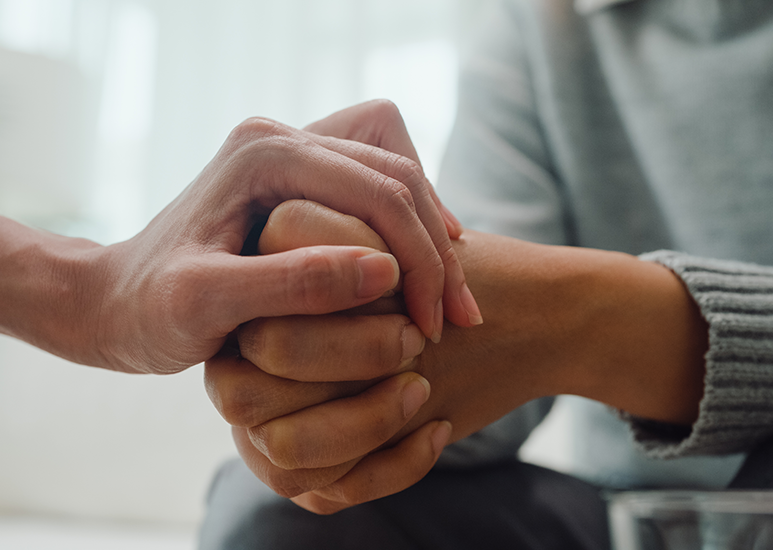Post-traumatic stress disorder (PTSD) is often stigmatized and misunderstood. This makes it not just difficult to live with, but also to watch your loved ones struggle with. The best way to better understand the condition and break the stigma is through education. Let’s dive into the must-knows of PTSD and how to best support those you love.
What Is PTSD?
Post-traumatic stress disorder is an anxiety disorder that occurs after witnessing or experiencing a traumatic event. The traumatic event could be life-threatening or pose a threat to your well-being including physically, emotionally or spiritually. It can impact people of any age, race or gender.
PTSD causes intrusive thoughts accompanied by distressing symptoms including:
- Anxiety
- Depression
- Feelings of guilt and shame
- Flashbacks or nightmares
- Avoidant behaviors involving activities or places related to the traumatic event
Misconceptions of PTSD
PTSD is commonly misunderstood which can lead to the spreading of misinformation. Most misconceptions around post-traumatic stress disorder involve how and when someone might develop it. Here are three of the most common assumptions made about the disorder:
Misconception: Only military veterans, especially those who have experienced combat, can develop PTSD.
Truth: Though it is commonly found in veterans, they are not the only people who develop the disorder. It can occur in any person who has experienced significant, life-altering experience.
Misconception: Everyone who experiences trauma develops PTSD.
Truth: Trauma impacts everyone differently and can cause a range of reactions. It’s only when the reactions, feelings and thoughts about the traumatic events do not get better over time that people develop PTSD.
Misconception: Post-traumatic stress disorder occurs immediately after the traumatic event.
Truth: PTSD could develop immediately, but it could also take weeks, months or even years before symptoms appear.
Stigmatization
Misinformation and lack of public knowledge about post-traumatic stress disorder often lead to the stigmatization of people who have it.
Over the years, stigma around PTSD has grown. People are sometimes mislabeled as “broken”. Many assume that this disorder causes people to be violent. There’s also an assumption that everyone should be able to “just get over” their trauma. All of which places blame where it does not belong and creates a false narrative around PTSD.
Each of these misjudgments can create a feeling of embarrassment, shame or guilt in those struggling with PTSD. Those feelings can lead to further negative outcomes for the individual, including:
- Lower likelihood to seek treatment
- Low self-esteem
- Depression
- Worsening PTSD symptoms
- Social isolation and loneliness
- A lack of self-confidence or belief in improvement
- Discrimination, harassment or physical violence by others
How to Break the Stigma
Here’s how you can play a role in reducing stigmatization:
- Educate yourself and others: Read up on helpful resources and respond to misperceptions or negativity with facts.
- Be conscious of your language: Avoid words that may cause shame.
- Have open conversations: Normalize mental health treatment, talking about symptoms and sharing stories.
- Show compassion to those struggling with mental health conditions.
How to Support Your Loved Ones
Not knowing how to help can feel daunting, but there are many ways to support a loved one with post-traumatic stress disorder.
- Learn all that you can about PTSD. This will help you better understand what your loved one is going through.
- Be there. Offering to talk, listen or give advice creates a positive outlet.
- Encourage them to lean on their close friends and family when in need.
- Offer to go with them to therapy or appointments to show you’re with them at every step.
- Plan activities with them. Physical activities like walks and bike rides are important for mental health and help clear the mind.
If you or a loved one is experiencing signs of post-traumatic stress disorder, visit eCommunity.com/MentalHealth or speak with a primary care provider.
